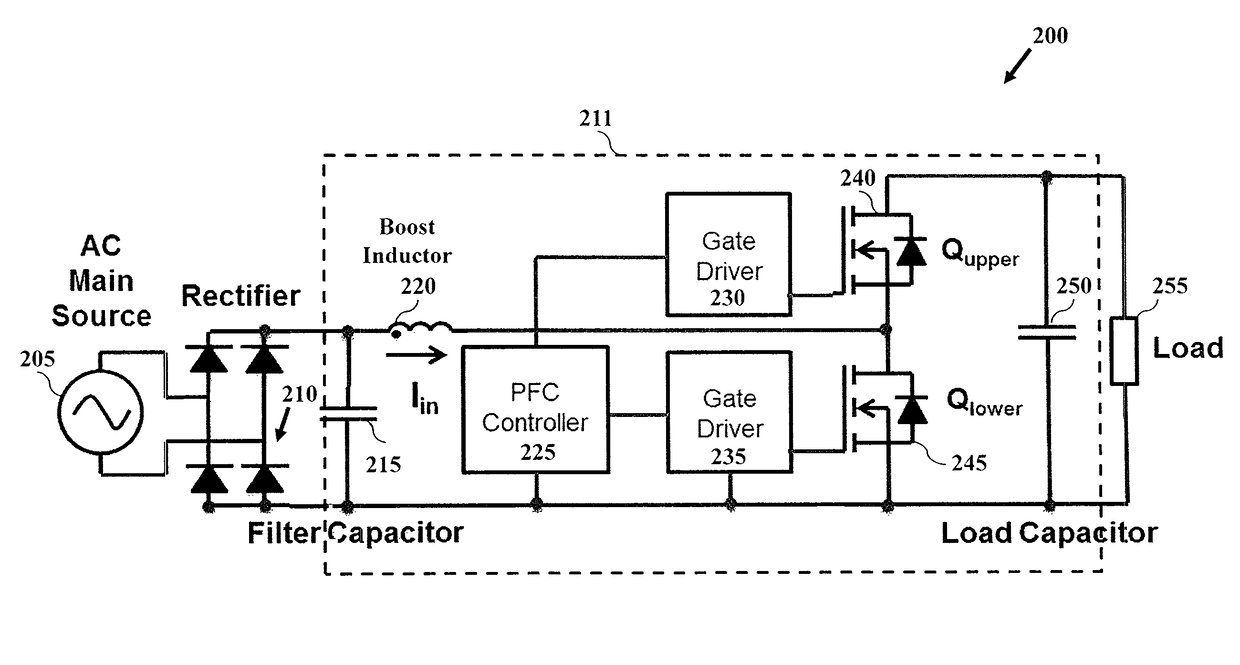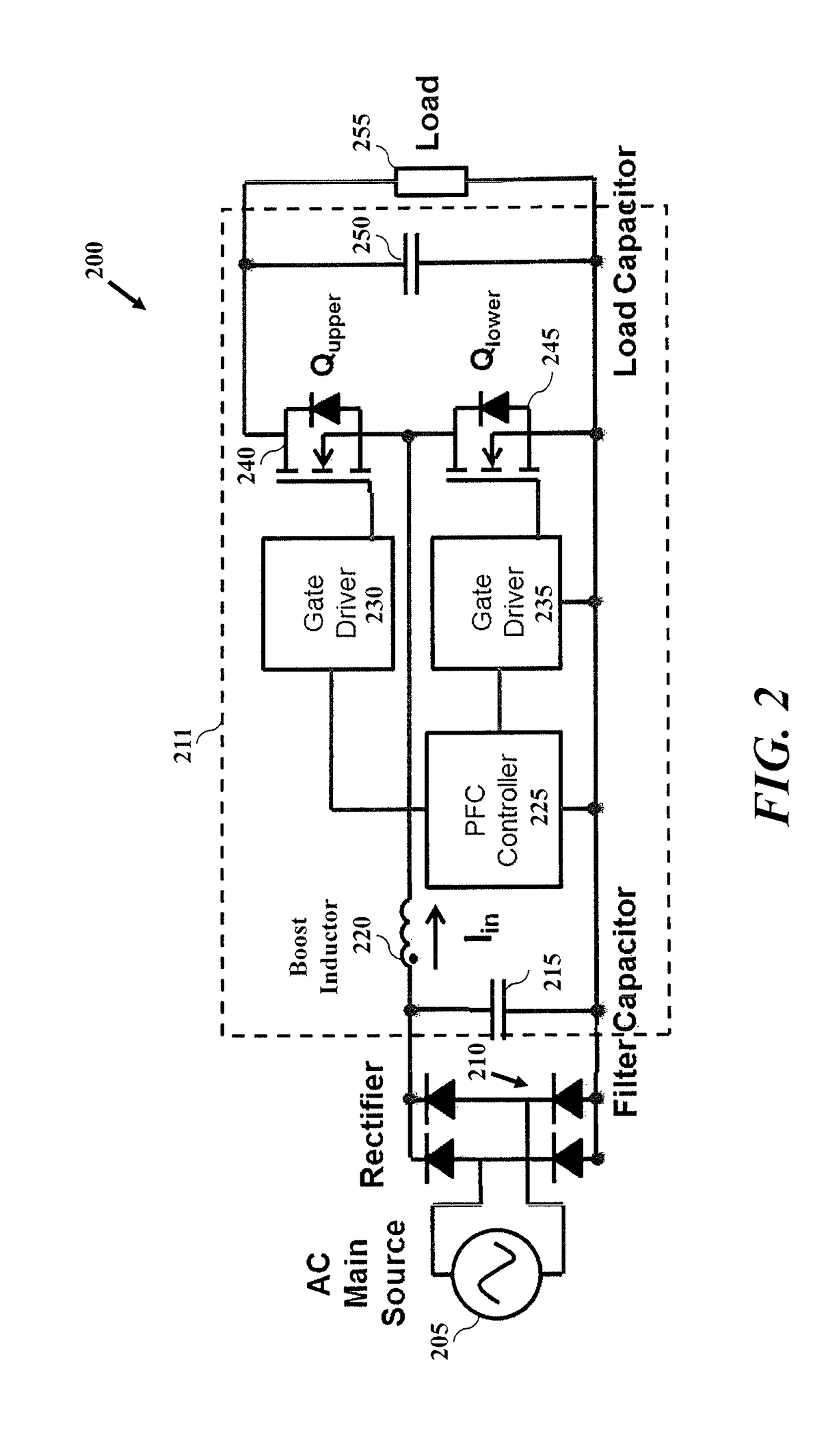Method for operating a non-isolated switching converter having synchronous rectification capability suitable for power factor correction applications
a technology of synchronous rectification and switching converter, which is applied in the direction of dc-dc conversion, power conversion systems, climate sustainability, etc., can solve the problems of discontinuous operation, circuits add cost and complexity to the converter, and the majority of pfc converters cannot absorb this cost, so as to improve efficiency and conversion pfc. , the effect of improving efficiency
- Summary
- Abstract
- Description
- Claims
- Application Information
AI Technical Summary
Benefits of technology
Problems solved by technology
Method used
Image
Examples
Embodiment Construction
[0020]Referring now to the figures, FIG. 2 depicts a synchronous rectifier boost power factor correction circuit 200 according to one embodiment. The rectifier boost power factor correction circuit 200 includes rectifier circuit 210 and a boost circuit 211. Rectifier boost power factor correction circuit 200 may be coupled to an AC main source 205 to receive voltage and current, and will provide a converted voltage to load 255. The boost circuit 211 includes a filter capacitor 215, an inductor 220, a PFC controller 225, two gate drivers 230, 235, a Qupper switch 240, a Qlower switch 245, a load capacitor 250 and the load 255. In a desired embodiment, the Qupper and Qlower switches are GaN FET rectifier switches.
[0021]The AC main voltage is rectified by the rectifier circuit 210 and filtered by the small filter capacitor 215 to yield a full wave rectified sine-wave voltage, which serves as the source to the boost circuit 211. The inductor current Iin is charged linearly when Qlower s...
PUM
 Login to View More
Login to View More Abstract
Description
Claims
Application Information
 Login to View More
Login to View More - R&D
- Intellectual Property
- Life Sciences
- Materials
- Tech Scout
- Unparalleled Data Quality
- Higher Quality Content
- 60% Fewer Hallucinations
Browse by: Latest US Patents, China's latest patents, Technical Efficacy Thesaurus, Application Domain, Technology Topic, Popular Technical Reports.
© 2025 PatSnap. All rights reserved.Legal|Privacy policy|Modern Slavery Act Transparency Statement|Sitemap|About US| Contact US: help@patsnap.com



